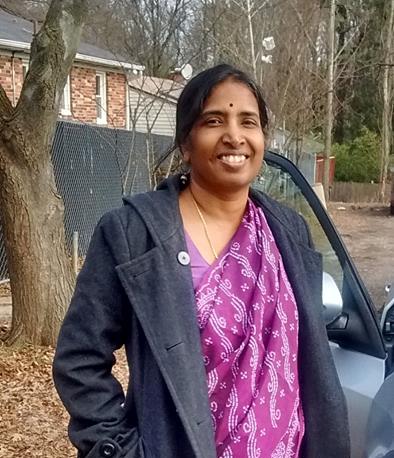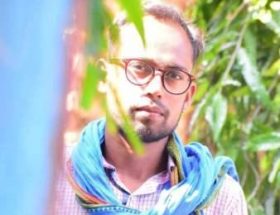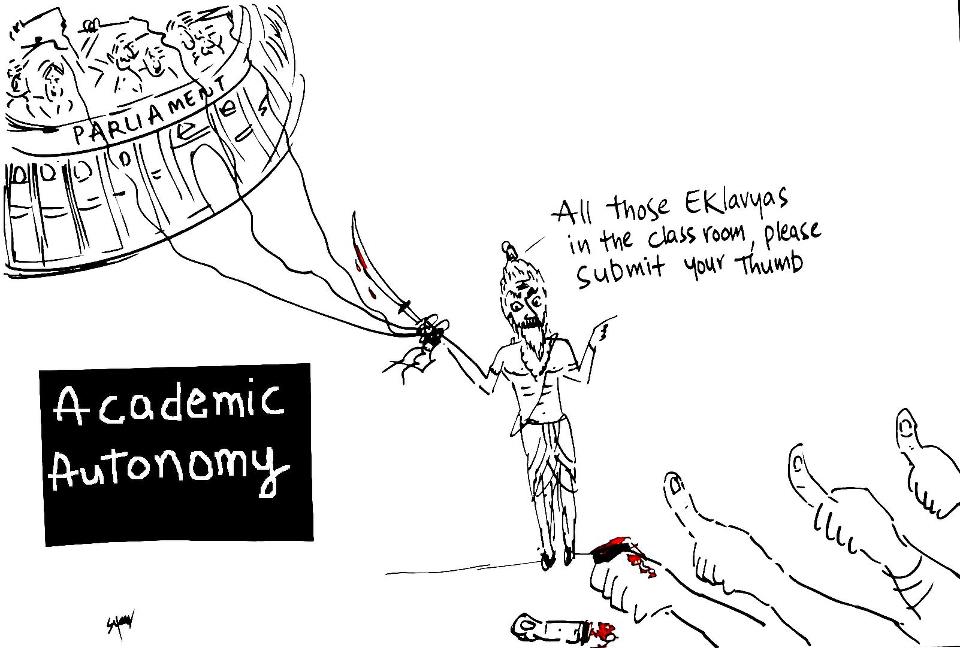Anu Ramdas

This article was written for the Society of Future Studies a member of the Swiss Academy for Humanities and Social Sciences and was published in their journal edition of 01/21 which focussed on The Future of India.
‘Unborn time’ feels like a good description for the ubiquitously used concept of future, it is a definition-defying yet universally understood concept. The term future and all that it connotes is a product of human imagination, irrevocably tied to a temporal state that will always be unborn. Since the future does not exist in time and space, no one demands tangible evidence for it, however a close reading of the present and the past is expected. Towards this, the human mind processes multitudes of factors to approximate a prediction of the immediate future. In a sense, prediction as a primordial survival skill is also one of the oldest transactional commodities used by humans, from individuals to nations.
The nation as a constructed idea bundles many kinds of promises and penalties – If you are a citizen, you will be protected. You will be provided for. Your rights and aspirations, that is, your present and future will be taken care of.
These promise/penalty packages are contingent on people’s belief in them. So, we have to imagine the nation as a sales team, one that must constantly work on its spiel about the future to keep the populace convinced. How does such a sales team go about making a pitch for something that has no concrete evidence of its existence?
This must be done in two ways, promise a better future to the ones protesting the present and the past. And simultaneously promise the same future for the ones who are content with their present.
Those who are content with the present require the social structure to remain static and those resisting the existing social structure want it destroyed. Only one outcome is possible.
With the above context, let us examine the specific topic given to me for this series: ‘The future of India: The situation and possible futures of the Dalits’.
Why is the future of India or any nation significant? And why would the future of one subset of a nation’s population be significant?
I will attempt to unpack the nature of the second question first. Why Dalits? Why not Adivasis, Pasmandas, Bahujan, Brahmins, Indian Christians, Parsis or any of the hundreds of social classes of India?
Two possibilities present themselves; the Dalits in some way are a representative class of all Indians and the nation. Or, the Dalits are not representative of Indians and India, therefore a special sociological lens is required with respect to their future alone.
What facts are at hand? The key terms are future, Dalits and India. Dalits are 16.6% of the population of India. This is hardly informative other than the fact that 83.4% of the population are unnamed and left to be assumed to be a homogenous social class oppositional to the Dalits. In this formulation and much of all academic and public discourse around the social structure of India, the Indian society is split into these two classes. Dalits and the rest. The rest is never named or identified.
In this bifurcation, all semantic inferences rest on the terms India and Dalit. For any subset information to have meaning we would need some insights into all the subsets. More simply, we need a part-whole relationship. Perhaps, there is a proposal to ask every subset of the Indian population their situation and futures and Dalit was just a random choice. If this was not the case, one is forced to wonder why Dalits were singled out for this exercise.
Let’s take it at face value that there is academic or logical credibility in this formulation and see where it takes us. If 16.6% of Indians are Dalits, who are the rest? Imagine not knowing this and having to look for all subsets of population within the political boundary of India. Is it so complex so as to not have that knowledge as quick facts? Or is it too fearsome a prospect for academic inquiry? In the absence of knowledge of who the others are, what exactly does the question of future of the Dalit mean? The sum of past and present experiences points to differential outcomes for different classes of Indians. Since this formulation posits only two social classes, Dalits and the rest, the obvious assumption is that the others’ futures are secure.
Let’s examine the other presupposition—Dalit. Who are they? Do they have a common ancestry or language or region? What is common to all Dalits? Perhaps, they practice some form of religion that is vulnerable and therefore their futures need a global discourse.
This will not hold; Dalits practice numerous ways of worship, many of which have no mainstream matches. Their religious beliefs cannot be the reason for concern about their future or common experience. In fact, the poet Joopaka Subhadra says there is no word for religion in her language. Like the rest of the Indians they speak different languages, live in different regions, have different political affiliations.
Quite clearly this question of Dalits and India along with their nested presuppositions emerges from a perception that there is some kind of persecution of Dalits. The origin and sustenance of this perception itself needs closer scrutiny. But for now, we will go with it as being based on substantial evidence. How did 16.6% of the population come to be a persecuted community? Why don’t they mutiny against the rest? It would mean mutiny against India.
If the Dalit is the stand-in for the wronged, then India is the stand-in for the wrongdoer. Temporally, the present must be in a state of mutiny so that both the wronged and the wrongdoer have a just future.
Are Dalits a proxy to understand the social structure of India? Are all nation states understood in this manner? As I have illustrated above, this is flawed at a very fundamental level and yet we have these discourses.
I want to call this the politics of ignorance cultivated by the academic class.
It is apparent that there cannot be an honest and direct discourse on the social structure of India – the caste system, a supremacist order. As it implicates and isolates the ruling class/castes as the beneficiaries of this supremacist order. Further, the Dalits are not the only community affected by the caste system, the Bahujan or the majority of the lower castes are affected. But it has been strategic to separate the Dalits from the Bahujan and present them as the only affected entity. It compresses the horrendous system into a simplistic binary.
For the western scholar, caste has always been too much of a mess to study. An early reference to this recognized difficulty can be seen in the notes of the first census effort by the British colonizers:
“In this manner it was designed to lay ‘a foundation for further research into the little-known subject of Caste,’ a subject in inquiring into which investigators have been graveled, not for lack of matter, but from its abundance and complexity, and the lack of all rational arrangement. The subject as a whole has indeed been a mighty maze without a plan.” Eustace J Kitts, 1885
The western scholars need a ‘plan’ that makes sense to their own contexts and realities. With respect to the ‘abundance of information about caste’ they find themselves bereft of analytical tools. And they typically resort to the default Eurocentric methods, putting diverse peoples, societies, and their histories into two neat buckets – race and religion. The center in the Eurocentric is white-Christianity. Rest of the world gets absorbed into this highly restrictive master-narrative. As Kuffir repeatedly points out in his writings, this results in the non-white world getting organized into racial and religious categories even when neither make any sense. The Dalit becomes equivalent to the Blacks, racializing the Dalits as well as the discourse on caste. Thus, propagating massive levels of ignorance, deliberate ignorance about people and an anti-social system that affects a billion humans. Kuffir and Aloysius argue that the western scholar’s limitation of seeing the world through the lens of organized religion led the British colonizers of the subcontinent to imagine a common religion “Hinduism” sans evidence. Multitudes of diverse people including the Dalits and Adivasis are clubbed into this religion without their consent or awareness. This religion with its inherent system of caste provides the ruling elites endless possibilities to control the masses and allows no change to the social structure.
Coming back to the promise of the future, which social classes can be invested in the status quo? The ones who are going to be born in the same castes at the top of the caste pyramid with the same material, social and political advantages generation after generation that secures their position as the perpetual ruling class.
In 1949, Dr Ambedkar in his last speech to the Constituent Assembly expressed this: “I am of opinion that in believing that we are a nation, we are cherishing a great delusion. How can people divided into several thousands of castes be a nation? The sooner we realize that we are not yet a nation in the social and psychological sense of the world, the better for us. For then only we shall realize the necessity of becoming a nation and seriously think of ways and means of realizing the goal. The realization of this goal is going to be very difficult, far more difficult than it has been in the United States. The United States has no caste problem. In India there are castes. The castes are anti-national. In the first place because they bring about separation in social life. They are anti-national also because they generate jealousy and antipathy between caste and caste. But we must overcome all these difficulties if we wish to become a nation in reality. For fraternity can be a fact only when there is a nation. Without fraternity equality and liberty will be no deeper than coats of paint.“
Seven decades on, the nation in reality did not materialize. Caste has prevailed. The idea of nation has become another tool that services the caste system and the ruling elites.
For the majority who are oppressed by the caste system, this is unacceptable, caste must be annihilated for the Bahujan to be liberated. This is the only way equality can be imagined and achieved for all. To transcend caste, the Dalit’s future is not a carrot to be dangled. The Dalit is like any individual any where in the world who imagines freedom, aspires for and works for an equal world that centers the humanity of individuals.
The unborn time is always a promise. Promise for the better or worse and the usually unsaid truism – remains the same. The vantage point of the Dalits shows that the future is not going to change for the majority of the working classes -the Bahujan caught in the caste system. And since popular discourses are still hesitating to find the language to name caste, the politics of ignorance will ensure that annihilation of caste is not a future.
If there has to be a future that ensures dignity for all, then India’s future is in its demise.
~~~
Anu Ramdas is a founder Editor of Round Table India.
Acknowledgements: This article was previously published in 01/21| Indien | swissfuture| 23-25










